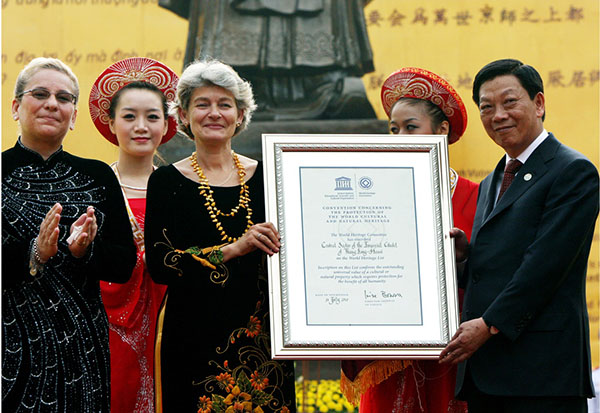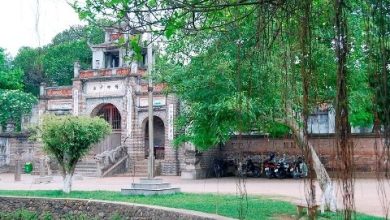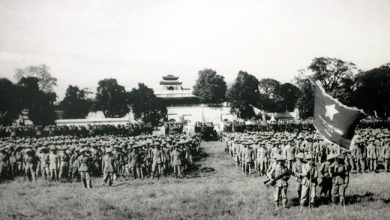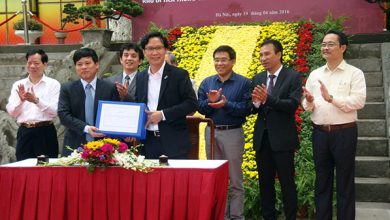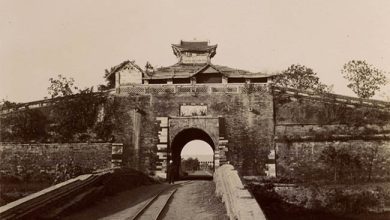Thăng Long – Hà Nội Heritage Conservation Centre – 5 years in retrospective
Visitors to Thăng Long Imperial Citadel in autumn seem to have a better grasp of this ancient capital city with a longevity of more than a thousand years.
The Imperial Citadel of Thăng Long-Hanoi became a World Heritage Site in 2010 as the city celebrated its millenial anniversary. The past five years have seen remarkable development of its mangement body – the Thăng Long-Hà Nội Heritage Conservation Centre. As we look back the journey over the past five years with pride, we feel an profound gratitude towards the previous generations who painstakingly nurtured the culture of the country and bequeathed to our generations this globally significant heritage site.
Reception of the World Heritage Certificate in October 2010
Breakthrough discoveries
Between 2002 and 2003, a large-scale archaeological excvation was conducted at 18 Hoàng Diệu, revealing an extremely precious complex of relics that testify to the presence and longevity of Thăng Long citadel over the course of a thousand years. Vietnamese and foreign experts in unison spoke highly of the archaelogical findings about Thăng Long Imperial Citadel made at the 18 Hoàng Diệu site, and called them leading discoveries about the national history and culture of Vietnam which can contribute to an uplifted status for the country and an elevated pride among the Vietnamese people. By 2004, after many years of closure, the Hanoi Ancient Citadel was transferred by the Ministry of Defence to the Hanoi People’s Committee. In October of the same year, the Hanoi Ancient Citadel was opened for the first time to the public, creating a special cultural phenomenon that attracted tens of thousands of visitors from all over Vietnam. Since then the cental main axis of Thăng Long Imperial Citadel began to be demystified. Initial research findings made by Vietnamese and foreign experts confirmed the substantial cultural, historical and scientific values of this especially important relic site.
The then Director-General of UNESCO Mr. Koichiro Matsuura upon his visit to the site on 17 July 2005 said that This is a unique relic site which is of special importance not only to Vietnam but also to the whole world. According to the World Heritage Convention, the Thăng Long Imperial Citadel meets the requirements and stands many opportunities of becoming a UNESCO Cultural Heritage Site.
With these words from UNESCO chief, Vietnam reinforced its hope of having a World Heritage Site at the heart of Hanoi, because the site itself proves to be of outstanding universal stature.
The World Heritage Site of Thăng Long Imperial Citadel – A 5-year Journey
The inscription of the Central Sector of the Imperial Citadel of Thăng Long-Hà Nội, popularly known as Thăng Long Imperial Citadel, on the World Heritage List brougth immense sense of pride to the peolpe of Hanoi and Vietnam at large. This inscription is the international recognition of the millenial cultural traditions of Thăng Long-Hà Nội and opens up windows of opportunities for international cooperation in the study, conservation and promotion of heritage values. Since the site’s addition to the World Heritage List, the Thăng Long – Hà Nội Heritage Conservation Centre has taken concrete measures to gradually conserve, restored and promote its values.
As early as in 2010, the Centre with a sense of urgency conducted a large-scale embellishment in order to give the site a more beautiful look with uninterrupted connection all the way from the Main Gate (Đoan Môn) to Ladies’ Pavilion (Hậu Lâu) to serve the sightseeing public. Investment was made by the city authorities in the archaeological site to build a system of entries and since 2010 the site has been open to the public.
In the subsequent years, the Centre organized many activities to enhance the visibility of the heritage site. Examples include thematic exhibitions during festivals, red-letter days and new year holiday, collection of objects and documents about the Operational Bunker and opened it to public visit. By now, Thăng Long Imperial Citadel has become a tourist attractions for visitors from within Vietnam and beyond, including the diasporic community on the occasion of the Lunar New Year. The site is used to organize major cultural events like the Book Fair, Japanese Sakura Festival, Vesak Grand Ceremony, etc. Many galleries and art performances have been held in citadel to introduce heritage sites across the country and the world with focus being given to the conectivity between Thăng Long Citadel with relic sites in other cities and provinces like Hải Phòng, Hồ Chí Minh, Nam Định, Thanh Hóa, etc.
Traditional art performances at Thăng Long Imperial Citadel
Regarding the integrated management of the heritage site, the Centre has received Zones A and B of the 18 Hoàng Diệu Archaeological Site and now open them to the public. Besides, it has also step by step taken management role of 9.14 hectare area in the Hanoi Ancient Citadel handed over by the Ministry of National Defence.
In addition, the Centre has accelerated the detailed planning for the conservation, restoration and promotion of the Central Sector of Thăng Long Imperial Citadel (scale 1/500) following Decision 1647/QĐ – TTg made by the Prime Minister, which ratified this planning. So far, the project has been completed and approved by the Prime Minister, thereby establishing a basis for gradual investment in the conservation and promotion of the heritage site on a long-term and sustainable basis.
In-depth research and conservation activities have been accorded adequate attention by the Centre, with focus given to the formulation of the master plan for the restoration of the Kính Thiên Palace and the Quảng chiếu Latern Festival as well as the archaeological excavation of the heritage site according to the timeline that has been approved. The Centre has worked with the Vietnam Institute of Archaeology to conduct probes and excavations in the area to the North of Đoan Môn and the area of Kính Thiên Palace foundation. The results of the excavations have enabled a clearer understanding of the Central Sector of the Imperial Citadel of Thăng Long, thanks to the discovery of the Ly-dynasty massive water channel and the Dragon Yard of the Lý, Trần, early and restored Lê dynasties. These most recent discoveries, together with the results of the excavations in the Vườn Hồng (Rose Garden) have shed even more light on the issue of the central axis of the Forbidden Citadel of Thăng Long.
After four years of implementation the Project “Conservation of the Thăng Long – Hà Nội Heritage”, funded by the UNESCO-Japan Funds-in-Trust, was able to fulfill the objectives set out in the beginning. The management plan approved by the Hanoi People’s Committee provides important legal and scientific bases for the long-term conservation of Thăng Long Imperial Citadel.
Cooperation between the Centre and other institutions and agencies inside and outside the country so far has helped to confirm and clarify the substantial archaeological values and the Outstanding Universal Value of the heritage site.
Long-term conservation of the special national relic site of Cổ Loa Citadel.
The Cổ Loa Festival
During the past few years, apart from the conservation, restoration and promotion of the World Heritage Site of Thăng Long Imperial Citadel, the Centre has also accorded focused attention to the management and conservation of the Cổ Loa relic site. The site is of enormous cultural and historical significance and historical longevity, regarded by scientists as “the most ancient, substantial and unique citadel in the ancient Vietnamese’s traditions of citadel construction”. Currently, the relic site is housing many types of tangible and intangible heritage which were related to the founding of the nation. The Cổ Loa relic site was classified by the Government as special national relic site in 2012.
For the Cổ Loa relic site, the Centre has paid attention to the building of the organizational structure, training of professional staff and improving the competence of the management board of the relic site to make sure they match the task of managing a special national site.
Besides, the Master Plan for the conservation, restoration and promotion of the Cổ Loa Citadel (scale 1/2000) approved by the Government, provides important legal basis for the gradual implementation of constituent plans and projects, thereby fulfilling the goal of conservation and restoration towards the construction of a History, Ecology and Humanity Park of the capital city Hanoi. This is also an important milestone for the people and authorities of Cổ Loa in their efforts to sustainably conserve the original values of the Cổ Loa region.
During the past five years, the Thăng Long – Hà Nội Heritage Conservation Centre has taken very firm steps and achieved remarkable progress in the conservation and management of the two precious heritage sites of the nation and humanity. Particular attention has been paid to the strengthening of organizational structure and training of professional staff to meet the requirements of managing the sites in changing conditions. Research and conservation of the heritage values have been raised to a new level, with many activities of cooperation within Vietnam and beyond and in-depth research on conservation areas while expanding archaeological excavation and enhancing the visibility of the heritage sites.
These achievements in the conservation and management work made possible by collective efforts of the staff of the Centre have been acknowledged through the various certificates of merit awarded to the Centre by the State President, the Prime Minister, the Hanoi municipal authorities among others.
The Centre stands ready to build on the recorded achievements and continue to complete the enormous tasks in conserving and safeguarding the heritage values for many more generations to come.
Kim Yến
Thăng Long – Hà Nội Heritage Conservation Centre

